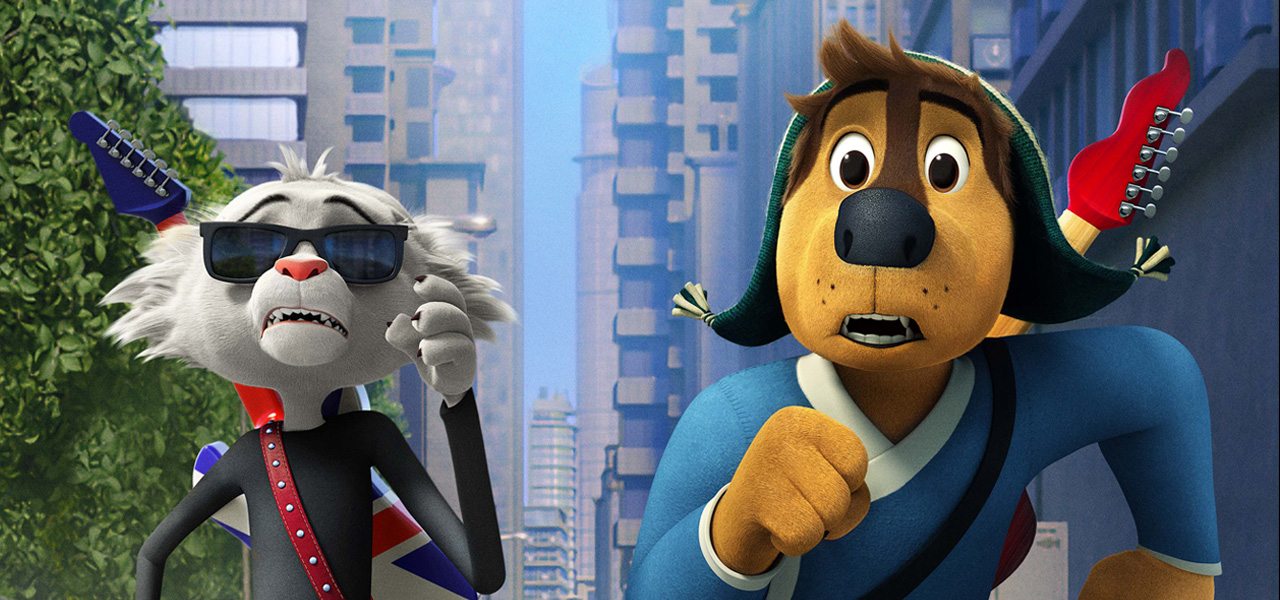
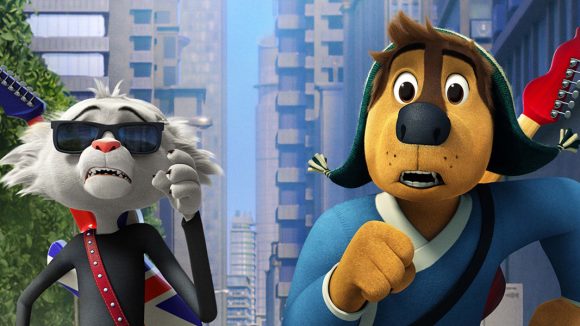
‘Rock Dog’ Director Ash Brannon On How To Navigate A Chinese-Funded Production
The Chinese-produced animated feature Rock Dog opens this weekend in North America. Despite the Chinese connection, American director Ash Brannon, who co-directed Pixar’s Toy Story 2 and Sony’s Surf’s Up, directed Rock Dogin the United States, with production handled mostly by Reel FX in Dallas.
Rock Dog had a rocky release in China, but Brannon has remained optimistic about what the film was able to achieve for an independent production, and one with Chinese producers and money (the film reportedly had a $60 million budget).
The director spoke with Cartoon Brew about taking the reigns on Rock Dog, his surprise at the generally hands-off approach from the Chinese producers, and the hardest part of making the film.
Cartoon Brew: You were initially on board Rock Dog as a story consultant. How did that lead to becoming the director?
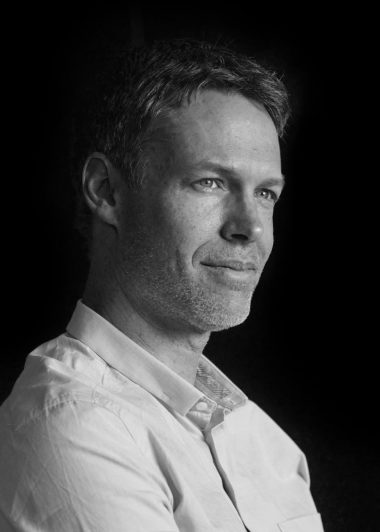
Ash Brannon: The producer approached me and offered me this chance to direct, and I really resisted. I resisted for about three years of the production, honestly. Finally I signed my contract I think about a year before we finished because I knew it was going to be a hard ride. I didn’t know how tough it would be going the independent route, but it was the passion for the story that really kept me and sustained me and pulled me along for the entire ride to the end.
It was unusual in a lot of ways but I think the initial appeal was two-fold. One was being able to work with this Chinese artist. Zheng Jun is a fascinating musician and also the creator of the graphic novel. And I also realized it would be fun to put together my own crew here in the States for the front end, meaning storyboards and the art department and editorial, and build a really tight team that was largely unsupervised. I mean, I’ll be honest with you, we had no adult supervision, and I was kind of looking for that for a change. That was a really appealing carrot to be dangling in front of me.
That’s an interesting thing given your previous experience at Pixar. Was there a very obvious difference between working on films there and this?
Ash Brannon: Absolutely. With Pixar you’re blessed to have the infrastructure of an amazing studio full of talented artists and the distribution mechanism through Disney. [On Rock Dog], we had almost none of that. We were unsure if we’d have money to pay everyone from week to week. At one point the financiers wanted to try and push the movie for a summer 2015 release, so in the middle of production we lost 12 weeks off our schedule which was about a quarter of our animation schedule. So, we encountered things that you wouldn’t ever encounter at a large studio pretty much every day. You never knew what to expect.
Given that it was a Chinese-American production, what were some of the cultural challenges or other issues that came up, or were you able to run it in the way that you wanted?
Ash Brannon: Great question. There were very few challenges. I expected more. But once Zheng Jun, again the creator of the graphic novel, came over to L.A. we spent about two weeks together initially just to go through the story and get on the same page, and it was during those two weeks that I realized a lot of things. That I knew that we were quickly on the same page and that we had the same ideas about the story and our love for music and how we wanted to convey that love through the movie. And I also realized that Zheng Jun was going to be very generous and trusting with my approach to assembling the team and putting together the project.
So they were amazingly hands-off. I think we got notes maybe one time from an executive screening of the animatic and that was the extent of it. We got the notes and they said, here you are, it was a half-a-page I believe of notes, and they said, we love it, keep going, please finish it by such and such date. And that was the end of it. So creatively I was amazed how much freedom they gave me.
Can you talk about the process of translating the graphic novel to the film, especially in terms of design? What considerations did you have to make about the audience you wanted to appeal to?
Ash Brannon: Well, we had to think about a lot of things. Tone was probably the first one. The graphic novel’s quite dark. For example, Bodi’s father [voiced by J.K. Simmons in the film] is torn apart by wolves I think on page eight, and that kind of cut against the idea of telling a father-son story. So we definitely wanted to lighten the mood. In terms of design, I had to look at the budget and the schedule from the get-go and really work within limitations. And so you’ll notice Bodi [Luke Wilson] – well, Tibetan mastiffs in particular have very long hair. They look almost like lions. And, as you know, hair is a very difficult and expensive challenge in animation. So we had to design characters with very short fur. And that’s one reason Bodi wears a hat. We just wanted to cover it up and make sure we could stick to our budget.

I’m very happy with Matthew Bates’ work on the character design front, and Peter de Sève also gave us some beautiful inspirational pieces at the beginning and we kicked off from there. Matthew did the final line-up and designed a beautiful set of characters that also allowed us to work within our budget.
One thing that some people were initially surprised about was that the project was realized first in English, and then dubbed later for the Chinese market. Did that affect anything in terms of the animation pipeline?
Ash Brannon: It’s funny but the issue of Western actors was never questioned, even from the beginning. I just said, can we record Western actors speaking English, and they said, yeah, that’s fine. So I wasn’t going to ask twice. I was very happy to work within my language. That would have been crazy trying to direct Mandarin.
Now, I know that the technology is getting to the place where they can re-animate lip sync, and we didn’t do that in this case. It was more of a traditional dub for China with some amazing actors over there. But that was out of my hands. But besides the foreign localization, it really was a Chinese movie made in America. And everybody involved on it wanted to make sure we made a movie that wasn’t made for one audience. They wanted it to be something that could play around the world. And so they really understood the need to make it as universal as possible.
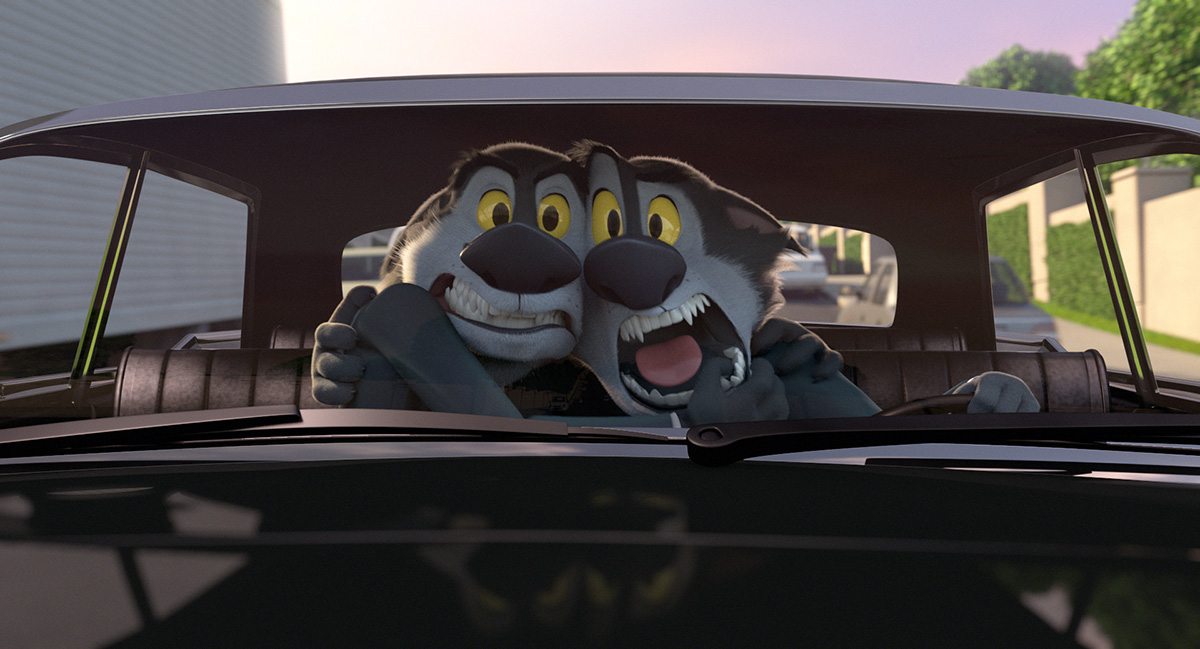
How did animation work – you had Reel FX on this film, didn’t you?
Ash Brannon: Yes, we hired them as a vendor which is a horrible clinical kind of way to say it, but they have an amazing set of artists down there in Dallas. We did a lot of work to prepare them for the film. The entire art department is here in Venice, California. And everything was a blueprint for them, from the animatic to the model sheets, and we wanted to be very clear what we wanted from them from the outset. I would go about twice a month during the craziest part of production to work one on one with the animators, and I knew quite a few of them from other studios and so we already had some shorthand with guys like Bill Haller who supervised the animation, and I knew some of the lighting guys as well.
We did a lot of remote work as well. Every day for dailies I came in at about 8:30 in the morning and we had video conferencing with the entire animation team in Dallas. And we had a Cintiq in the room so that their scenes could be played back on the screen in front of me and I could draw any notes, poses, and pose changes in real time in front of them. Between that and the video conferencing it was almost like being in the same room together. So we formed a pretty nice close knit team for the duration of production even though we were in L.A. and they were in Dallas. Reel FX has a satellite office, of course, in Santa Monica so that made it easy as well.
We also had a little team from Little Zoo in Maine which did some additional work, in fact they did phenomenal work there. And then we had one animator in Australia. I don’t know what crazy hours he was keeping to tune in for our dailies.
What was one of the most challenging parts of getting this film made, maybe a story hurdle or just the path to the end?
Ash Brannon: For me, story is everything and I didn’t want to go into production until we knew the story was working. And that was actually one of the benefits of our setup. We weren’t already attached to a production company. We didn’t have animators sitting and waiting and pressuring us to get the story right like you do often at big studios. Because we had a lot of lead time to put the reels up. And we put the entire animatic up about three times before we even started to think about layout. And at that point we identified some tent pole scenes that we knew could go forward without being touched. But this was a skeleton crew, I mean we had a maximum of four story artists at any given time. I was boarding myself and throwing boards to Ivan Bilancio, the editor. At the end of it, all the story team had to move on to other projects and it was just Ivan and myself for the last three months or so putting the finishing touches on the animatic.
With some of these films that have Chinese investment, there’s always a lot of discussion about whether this is the new wave of filmmaking. What do you feel like you’ve learned about having this kind of experience with a Chinese-American production?
Ash Brannon: Of course, money’s the biggest factor and what I wanted to show is that if you put the attention on your animatic before you think about going into production, that is the way you can save your money and spend it well. The worst thing you can do is force a movie into production when the story is not baked, because then you’ll end up with a half-baked movie or you’re going to have to re-do a lot of it, and the bill’s not going to be cheap.
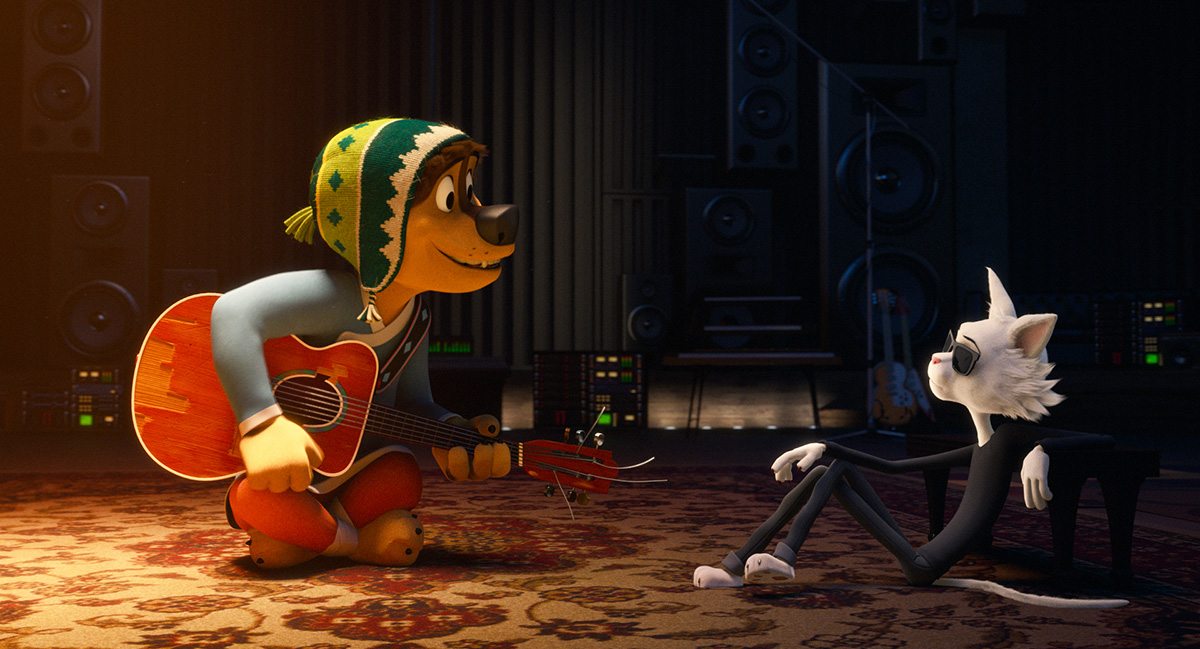
So I feel that I did convince the people involved in Rock Dog that the animatic is a blueprint to be seriously worked on and not put into production until it was ready. So I hope we see more of that, because I think it can open doors to more independent low-budget animated films that can be done with nice quality.

.png)